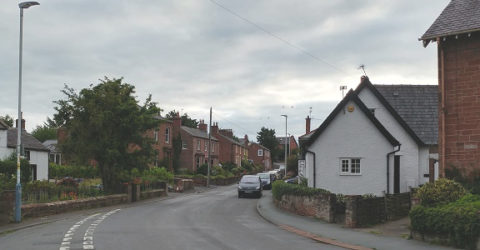Project Gigabit: government set to upgrade regions with slow broadband
The Government’s latest attempt to level up the online playing field is here

If you live in a city, there’s a good chance you’ll already have the option to enjoy hyperfast home broadband.
Companies offering full-fibre broadband deals are rolling out local networks of fibre optic cabling which enable homes to enjoy data transfer speeds of up to 1Gbps.
However, this is something of a postcode lottery.
MoreBest Broadband UK: Top 10 places to live revealed
While households in Carlisle enjoy gigabit connectivity as a matter of course, twenty minutes away, Lake District residents routinely struggle by with ADSL connections.
These can be one hundredth as fast as gigabit broadband services, and they’re increasingly unfit for purpose in the age of Zoom conferencing and 4K streaming.
Introducing Project Gigabit
The grandly-titled Project Gigabit is the latest state-sponsored attempt to level up the (decidedly uneven) playing field of domestic broadband speeds.
A total of £5 billion has been set aside to upgrade infrastructure across sparsely-populated rural regions.
Phase 1A covers areas like Cumbria, Cornwall, Cambridgeshire, Northumberland and Tees Valley.
Over 500,000 homes will be serviced, though this is less than the 640,000 properties scheduled into Phase 1B.
While 1A has a northern bias, 1B encompasses Suffolk and Shropshire, Norfolk and the Isle of Wight.
Future phases will roll out across less urban areas throughout England, while other UK regions will become involved as procurement updates are released sequentially.
We’ve published a framework below of when your part of the country is scheduled for coverage, according to the most recent DCMS update.
What does Project Gigabit mean for me?
The Government is proud of the fact that 39 per cent of UK dwellings have access to the fastest broadband deals, though that statistic betrays the fact 61 per cent don’t.
The plan is to future-proof home connectivity for decades to come, by providing upload and download speeds capable of underpinning any technology we’re likely to see before 2050.
Although primarily focused on residential homes, it also supports some rural public buildings, with £110 million set aside to bring schools, surgeries and libraries online.
The project should deliver gigabit connectivity to 85 per cent of the country by 2025 – significantly below the Conservative Party’s manifesto pledge to achieve 100 per cent by then.
There is a focus on connecting homes unable to access speeds above 30Mbps – the minimum you should expect from Fibre to the Cabinet connectivity.
However, if a property is going to be prohibitively expensive to connect, it may be excluded from the scheme entirely.
MoreWhy full UK coverage is impractical for broadband providers
It’s clearly not cost-effective for taxpayers to fund a full fibre connection to an isolated Highland bothy whose sole occupant may be perfectly happy being off-grid.
It’s estimated that around 300,000 properties could be economically unviable in terms of obtaining gigabit connectivity, though many will be serviced by superfast lines in due course.
The full Project Gigabit schedule
This is the order in which various parts of the UK are likely to be covered.
It starts with some of the most rural regions where connectivity is worst, gradually working down to more well-appointed metropolitan areas.
It’s worth noting that broadband rollout is devolved to an extent, and the Scottish, Welsh and Northern Irish Governments will have their own say on which regions are prioritised:
Phase 1A
- Dorset
- Cambridgeshire (including Peterborough and parts of Northamptonshire, Essex, Hertfordshire and Rutland)
- Cornwall and Isles of Scilly
- Cumbria
- Durham, South Tyneside & Tees Valley (covering Durham, Darlington, Stockton, Hartlepool, Middlesbrough, Redcar and Cleveland, Sunderland, Gateshead, South Tyneside)
- Essex
- Northumberland
Phase 1B
- Hampshire and Isle of Wight
- Norfolk
- Shropshire including Telford and Wrekin
- Suffolk
- Worcestershire
Phase 2
- Bedfordshire, Northamptonshire and Milton Keynes
- Buckinghamshire, Hertfordshire and East of Berkshire
- Derbyshire
- East Sussex
- Kent
- Lancashire
- Leicestershire and Warwickshire
- Northern Ireland (part)
- Nottinghamshire and West Lincolnshire
- Oxfordshire and West Berkshire
- Scotland (part)
- South Yorkshire
- Staffordshire
- Surrey
- Wales (part)
- West Yorkshire and parts of North Yorkshire
- West Sussex
- Wiltshire and South Gloucestershire
Phase 3
- Birmingham and the Black Country
- Cheshire
- Devon & Somerset
- Herefordshire & Gloucestershire
- Dorset (remaining)
- Essex (remaining)
- Lincolnshire and East Riding
- Greater London
- Merseyside and Greater Manchester
- Newcastle and North Tyneside
- Northern Ireland (remaining)
- North Yorkshire
- Scotland (remaining)
- Wales (remaining)






